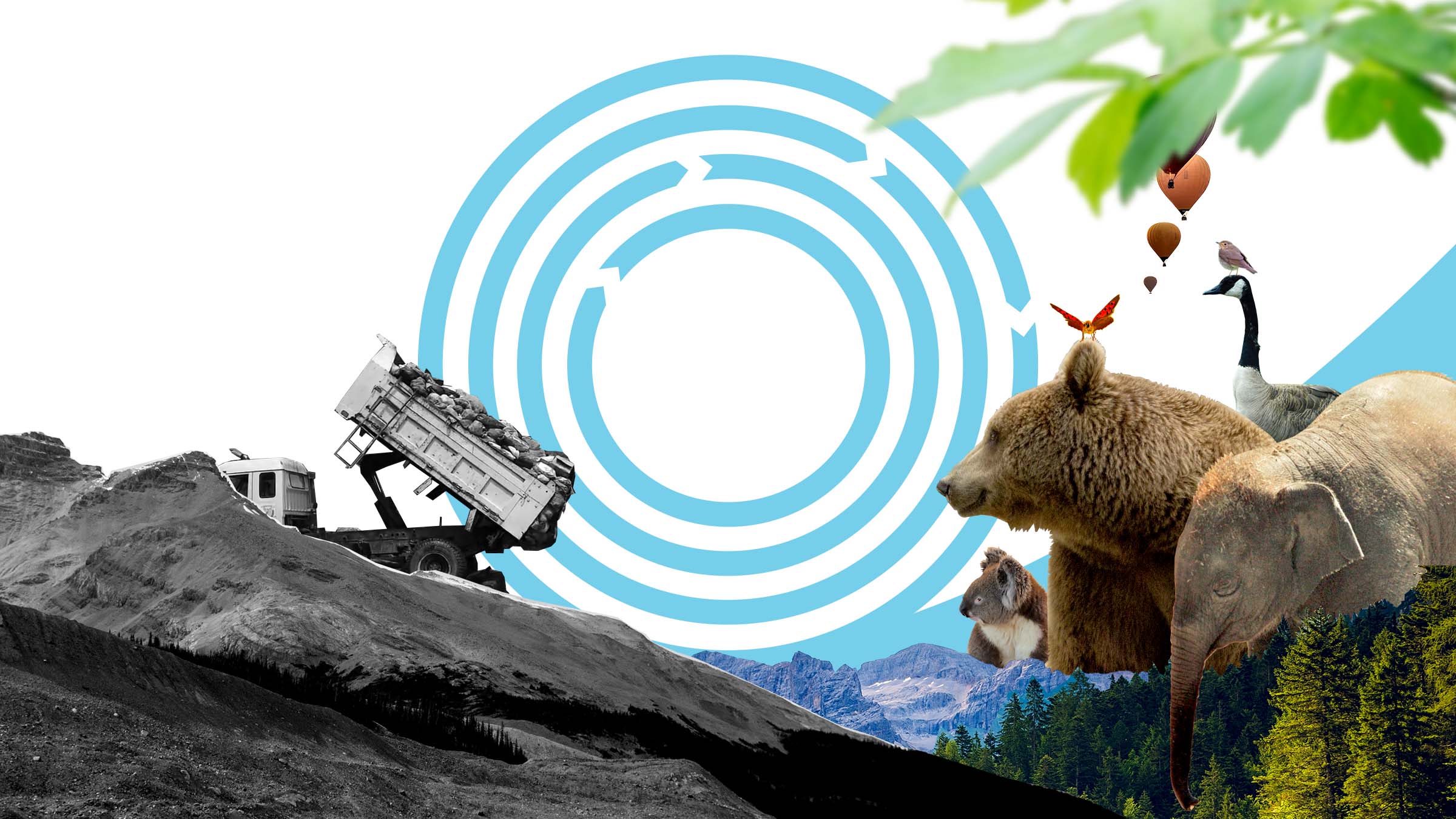We are losing biodiversity at an alarming rate all over the world. The situation is serious because our health, economy and well-being are all utterly dependent on nature and the services it provides.
According to the recent study Tackling root causes – Halting biodiversity loss through the circular economy by the Finnish Innovation Fund Sitra, we already have the solutions to halt global biodiversity right in front of us – in the form of the circular economy The circular economy An economic model which does not focus on producing more and more goods, but in which consumption is based on using services – sharing, renting and recycling – instead of owning. Materials are not destroyed in the end, but are used to make new products over and over again. Open term page The circular economy . By designing out waste, by making products that last and by keeping those products in active use as long as possible, we get more value from what we have. This also reduces the need to extract new natural resources, leaving more room for nature to thrive.
The study is the first to quantify the role a circular economy can play in tackling global biodiversity loss, targeting the four sectors with the largest impacts. To do this, Sitra teamed up with experts from Vivid Economics.
The potential of the circular economy is significant: circular interventions in the food and agriculture, construction, textiles and forest sectors can halt biodiversity loss even if no other action is taken. And more than that, the study finds that the world’s biodiversity can recover to 2000 levels by 2035, if the circular interventions are implemented.
“It is possible to halt biodiversity loss, but it requires significant changes in how we produce, consume and manage products and materials. The circular economy offers solutions, and the best thing is that these solutions are ready to be used,” says Kari Herlevi, Project Director at Sitra.
Food – the biggest challenge but the greatest potential
According to the study, the sector where circular interventions can have the largest positive impact is food and agriculture. Merely by shifting to more alternative proteins and regenerative agriculture, and by reducing food waste by half, biodiversity loss could be halted by 2035.
In practice, the transition to a circular economy in the food and agriculture sector will make it possible to produce the food humanity consumes on a much smaller area of agricultural land and with fewer inputs such as fertilisers, leaving more room for nature to thrive. According to the study, which captures the impacts on biodiversity from changes in land use, the circular interventions examined could for example free up agricultural land corresponding to as much as 1.5 times the size of the European Union for other uses by 2050.
To make the transition possible, the circular economy should be harnessed as a tool for halting biodiversity loss by both businesses and policymakers, by the following means.
First, the circular economy should be integrated into all decision-making and strategies.
Second, the emphasis should be on circular interventions that effectively halt biodiversity loss and at the same time mitigate climate change. According to the study, many circular interventions that tackle biodiversity loss also reduce greenhouse gas emissions, not least those solutions that give us more value from our biomass, including substituting alternative proteins for meat and reducing food waste – these are the two solutions in the study with the most impact and are also practices that people can easily adopt. In the food and agriculture sector, the transition to a circular economy would reduce methane emissions from agriculture by as much as 90 per cent by 2050.
Both these means will also be addressed in this year’s World Circular Economy Forum, which will be held in Rwanda and online at the end of the year.
“Biodiversity loss is a challenge that may even eclipse climate change in the years to come, and thus far we are not doing nearly enough,” says Herlevi. “The good news is that the circular economy has largely been an overlooked opportunity, even though we already have the circular solutions right in front of us. We can halt the biodiversity decline before it is too late, even as early as the next decade.”
“The planetary boundaries are all deeply connected, but climate and biodiversity are core boundaries. They impact on all others,” says Johan Rockström, Director of the Potsdam Institute for Climate Impact Research, who will give a keynote speech to a Sitra webinar on 13 June, where the results of the study will be discussed. “The next 10 years must see the most profound transformation the world has ever known.”
Read the study Tackling root causes – Halting biodiversity loss through the circular economy.
The study results were discussed in a webinar on 13 June with Johan Rockström and other leading experts. Watch a recording of the event on Youtube.



